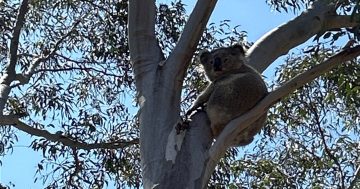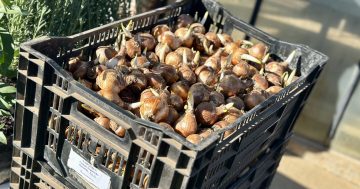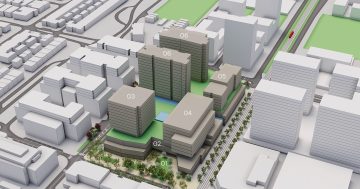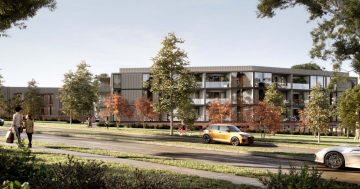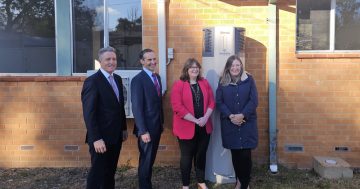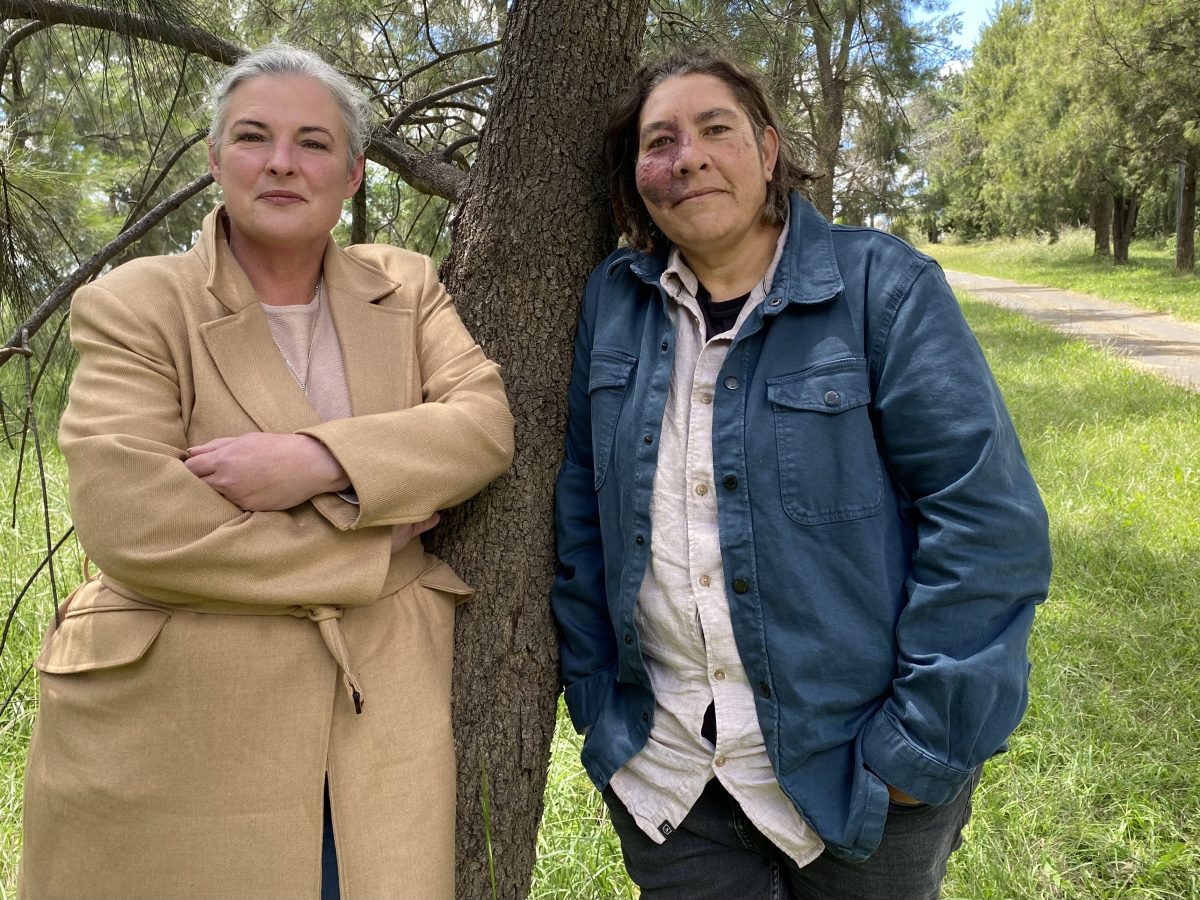
Urbanistik’s Clare Gilligan and cultural systems ecologist Dr Chels Marshall are putting Country first in the design for potential retirement village in Gungahlin. Photo: Claire Fenwicke.
Many know the fundamentals that go into designing a new development – the location of buildings, sewerage, water, roads and footpaths.
But what about considering the development from an Indigenous cultural lens first, and then fitting the rest around Country?
That’s the approach being taken by Urbanistik while designing its proposed retirement facility at Gungahlin Homestead.
To spearhead the design, it’s employed Dr Chels Marshall – a cultural systems ecologist and senior research fellow at Deakin University’s National Indigenous Knowledges Education Research Innovation (NIKERI) Institute.
“It’s about putting Country first, because healthy Country means healthy people,” the Gumbaynggirr woman said.
“Planning in the past has involved the complete removal of humans from the environmental processes and ecosystems, whereas Indigenous ideology places us in that.”
She said it was about approaching planning from the four Rs:
- regeneration – of species, functions and systems of the environment
- retainment – of native species and “kin”
- revegetation – identifying areas where that can happen
- reinventing – bringing back Indigenous ways of looking after Country, such as resetting with a cultural burn.
“It’s about a balance to acknowledge what is there and listening to what the country is saying to us,” Dr Marshall said.
“Just like with humans, we look at Country which is sick and go through the processes of working out why.”
Traditionally, the environment and a site’s ecology was placed towards the end of the planning process, once it was determined where essential infrastructure needed to be placed.
This approach has flipped that ideology on its head.
“It’s bringing humans to be part of the ecology cycle of a place, and become stewards and custodians of the land,” Dr Marshall said.
“It’s a completely different lens where we are a component of those systems.”
But what does this look like when it comes to planning a development?
Dr Marshall examined the potential to create space for kin, equitable space sharing, socio-economic land production to include bush food and Indigenous medicines, what trees could be kept, what water systems could be put in place – all to create healthy Country where humans and the land could co-exist and support each other.
Urbanistik general manager Clare Gilligan said this approach was about more than the development.
“It’s about how to re-create a whole ecosystem so the country is better for having done it, rather than having done nothing,” she said.
“I’d love to create a place where all people can understand how to connect to Country so we can restore it.
“So we’re starting with Country and having our houses placed in Country, rather than on and all over it.”
Ultimately, Ms Gilligan wants to create a development that considers ageing, climate and species all together.
“If I can show this is an alternative, a pilot that works, I hope to move all of the development industry to a different way at looking at how we do business,” she said.
“At the moment our approach is to put a fence around species and land, but all you’ve done is create a zoo, not an ecosystem.
“I want to prove you can create something commercially viable and can respect ecology and country.”
The potential development for the 36-hectare site is an over 55s community with detached houses, apartments, aged care and high-level care.
The CSIRO is the site’s tenant until 2023. Urbanistik will then apply for the land to be used for retirement living.
Dr Marshall said Indigenous culture had always valued and respected older generations and felt this was also a chance to change the way we approached wellbeing in retirement communities.
“It’s about future planning and future design, we need to change things up now as we design and plan for an increasingly older population which will be healthier than ever before,” she said.
“We need to be adapting, monitoring, evaluating what we’re doing, looking at how we do design when there’s going to be this increase in demand.
“This approach uses Indigenous ideology as the foundation.”
She said we needed to realise we’re living in an uncertain time, and our planning systems needed to change with those times.
“We need to look at what nature is doing, where it wants to flow, and work into that.”
Original Article published by Claire Fenwicke on Riotact.



